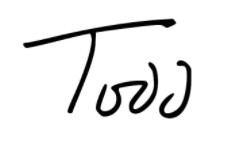
PT Boat 109 commanded by LT John F. Kennedy
The Navy, more than any branch, harbors mysteries. How long is a fathom? What is “gedunk”? How do you pronounce “boatswain” or “fo’cle”? Who is Davy Jones, and what’s in his locker?
But even the Navy has a hard time explaining the most fundamental mystery of all: what is the difference between a ship and a boat?
In the days of sail, the rule of thumb was: a ship has three or more masts. Anything else is a boat. But how does that translate into the modern maritime world?
Put simply, it doesn’t.
And, yet, woe unto the unsuspecting landlubber who mistakenly calls a ship a “boat” in the company of Navy veterans! I’ve done it several times over the years, and it never goes unnoticed, nor uncorrected.

Swift Boats in the Vietnam Brownwater Navy
Usually, the veteran explains the distinction this way: “You can put a boat on a ship, but you can’t put a ship on a boat.”
That’s a fun way of saying, “ships are big, boats are small.”
Occasionally, I’ll hear a different explanation: “A ship has a commander and a crew. A boat just has whomever is on it at the time.”
One friend of mine, a Navy vet with a brain for design and engineering, dismisses these explanations and claims it’s all about hull shape. You have displacement hulls, planing hulls, round-bilge hulls, and others. These can be hard-chined or soft-chined or semi-displacement or semi-planing. The variations seem endless, and I understand none of them. To keep it simple, my friend says, just remember that a V-shaped hull for deep water belongs to a ship. A flat-bottom, to a boat.
The problem with all these explanations is that they are riddled with exceptions.
Take the WWII PT Boat. It could carry a lifeboat on its foredeck. It was made for deep water and had a permanent crew with a commanding officer. Yet, no one calls a PT Boat a “ship.” Same goes for so-called Vietnam “swift boats” (Patrol Craft, Fast or PCF). They had crews, but were definitely “boats.”

LST-325 from WWII
On the other hand, LSTs (Landing Ship, Tank) or LSMs (Landing Ship, Medium) have the very word “ship” in their names. Yet, they have flat bottoms.
And how about submarines? Here’s where things get really confusing. Submariners conspicuously refer to them as “boats.” (A good way to out yourself as a “surface puke,” as submariners refer to non-submarine sailors, is to call a sub a “ship.”) Yet, by any measure, submarines are ships.
Fleet ballistic-missile submarines—called “Boomers” in sub-speak—are over 500 feet long and have crews of 150 or more. Webster’s dictionary will tell you plainly: they’re ships. But Boomer crews will insist they’re “boats.”
After studying the problem, I’m more confused than I was before, except for one thing: I’m certain I’ll never understand the Navy.



